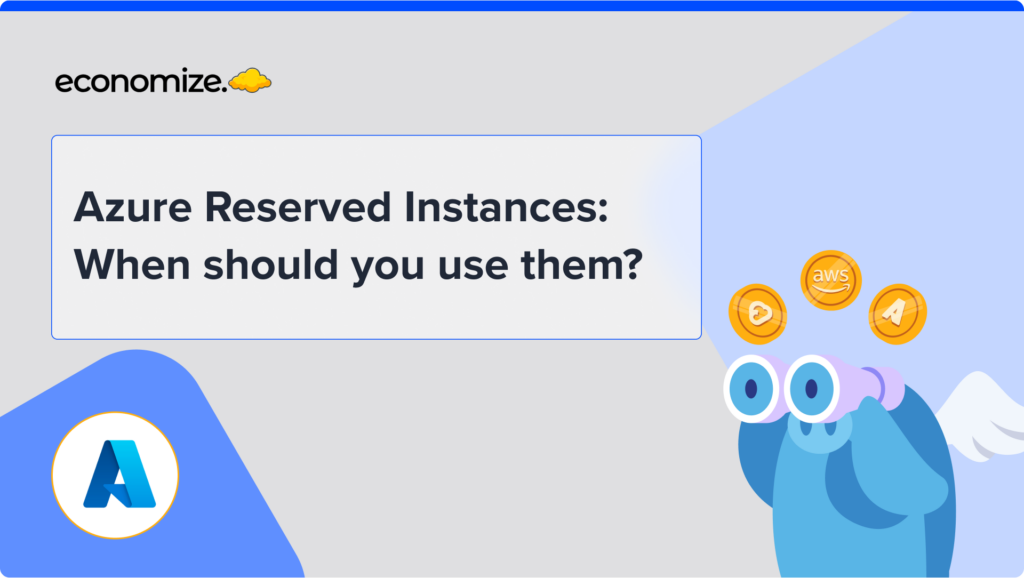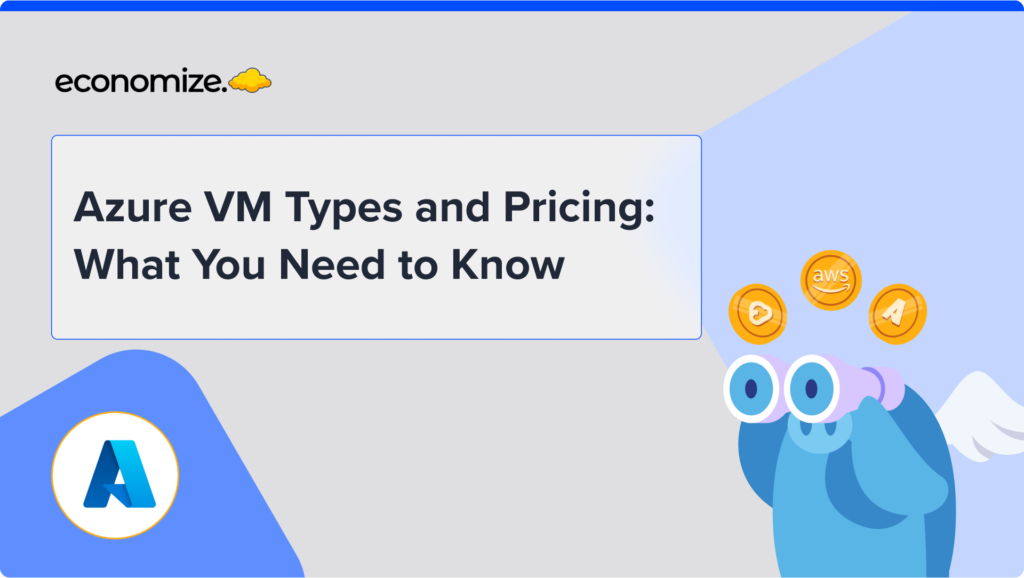What is AWS EBS?
Amazon Elastic Block Store (AWS EBS) is a scalable block storage solution provided by AWS. Amazon EBS plays a crucial role in providing persistent block-level storage for EC2 instances. While EC2 provides ephemeral storage, AWS EBS volumes provide an independent and persistent storage option. This means the data in EBS will be available even when the associated EC2 instance is stopped or even terminated. AWS EBS volumes are used for storing critical application files, databases, etc.
EBS volumes can be attached or detached from a running EC2 instance, which enables scaling and adjust storage capacity according to your business needs. As EBS decouples storage from EC2 instances, you can easily migrate your applications to different EC2 instances, without worrying about database migration.
AWS EBS – Volume types
AWS EBS offers a variety of volume types with varied performance metrics, storage performance, and EBS pricing. Choosing your right volume type depends on factors such as optimal Input/Output Operations Per Second (IOPS), the application throughput, etc. The EBS volumes are mainly classified into two categories: SSD-backed storage and SDD-backed storage.

SSD-backed Storage Volumes
SSD-backed storage volumes are used for transcational workloads such as databases, and virtual desktops. It is suitable for highly demanding transactional applications which include SAP HANA, Microsoft SQL Server, IBM DB2, etc. It offers both high-performance SSD volumes (io2 Block Express and io1) and General Purpose SSDs (gp3 and gp2) to cater to common use cases.
General Purpose SSD
General Purpose SSDs offer a balance of IOPS (Input/Output Operations Per Second) and throughput, making them suitable for applications requiring a mix of read/write operations and fast response times. Both gp2 and gp3 offer different price-performance options within the SSD category. The new gp3 volumes provide up to 20% lower price per GB than existing gp2 volumes.
The gp3 volumes are suitable for applications that require high performance at low cost, which includes MySQL, Cassandra, virtual desktops, and Hadoop analytics clusters.
Provisioned IOPS
Provisioned IOPS are designed for mission-critical applications demanding predictable, high IOPS performance. It helps you achieve consistent sub-millisecond latencies and deliver the provisioned performance 99.9% of the time. These volumes are more suitable for applications like SAP HANA, Oracle, Microsoft SQL Server, and IBM DB2 that require higher uptime.
HDD-backed Storage Volumes
HDD-backed storage for workloads that require high throughput, such as MapReduce and log processing. Compared to SSDs, HDD-backed volumes offer lower cost per gigabyte. It is further classified into two categories:
Through Optimized HDD volumes
Throughput Optimized HDD volumes are designed for workloads with high sequential data access patterns. These volumes offer good throughput at a lower cost per gigabyte than SSDs, making them suitable for tasks like Amazon EMR, ETL, data warehouses, and log processing or streaming large datasets.
Throughput Optimized HDD volumes offer a baseline throughput of 40 MB/s per TB and bursting of up to 250 MB/s per TB and 500 MB/s per volume. These volumes are backed by hard disk drives (HDDs) that support high throughput, I/O intensive workloads.
Cold HDD
Cold HDDs are designed for infrequently accessed data archives. They offer the lowest storage cost per GB and have the slowest access times. They are ideal for storing backups, disaster recovery data, or rarely accessed logs where cost efficiency is paramount.
old HDD volumes are ideal for workloads with occasional bursts of I/O, offering a baseline throughput of 12 MB/s per TB, with the ability to burst up to 80 MB/s per TB or 250 MB/s per volume. This makes them cost-effective for workloads with relatively low average I/O needs. It’s important to get an understanding of these for subsequent AWS Cost Optimization.
AWS EBS Pricing Structure
Understanding the EBS pricing structure is crucial for optimizing your cloud storage expenses. AWS EBS offers a pay-as-you-go approach, allowing you to only pay for the resources you provision and use. All storage types are charged for the amount of GB provisioned per month until the storage is released. EBS pricing increases for volumes that support additional input/output operations per second (IOPS) and throughput beyond baseline performance.
Amazon EBS Free tier
Amazon offers a free tier for its first-time users. For AWS EBS volume, the free tier includes 30 GB of storage, 2 million I/Os, and 1 GB of snapshot storage.
Amazon EBS Pricing for SDD and HDD volumes
General Purpose SSD (gp3): This is the most affordable option for SSDs, with a base price of $0.08 per GB per month. It also offers options for purchasing additional provisioned IOPS (Input/Output Operations Per Second) or throughput for a higher cost.
General Purpose SSD (gp2): This tier costs slightly more than gp3, at $0.10 per GB per month. It does not offer the option to purchase additional IOPS or throughput separately.
Provisioned IOPS SSD (io1): This tier is designed for workloads requiring high and consistent performance. It has a base price of $0.125 per GB per month, with additional charges for provisioned IOPS.
Provisioned IOPS SSD (io2): This is the most expensive tier, with a base price of $0.125 per GB per month and additional charges for provisioned IOPS. However, it offers the highest and most consistent performance among the options listed.

Throughput Optimized HDD (st1): This option is suitable for workloads requiring high sequential data access and offers a cost-effective storage solution. It costs around $0.45 per GB-month of provisioned storage.
Cold HDD (sc1): This volume type is the most cost-effective option within EBS, offering the lowest storage cost per GB per month. It is suitable for applications with slow access times and for storing infrequently accessed data. It costs around $0.45 per GB-month of provisioned storage.
Amazon EBS Snapshots Pricing
Amazon EBS Snapshots are point-in-time copies of your block storage data. EBS pricing for Snapshots are categorized into two storage tiers with different pricing structures:
Standard Tier: This tier stores snapshots incrementally, i.e., you only pay for the data that has changed since the previous snapshot. This is the most cost-effective option for frequently updated snapshots.
Archive Tier: This tier stores full copies of your data, and you are billed for all the stored data. However, it offers lower storage costs compared to the Standard tier. It’s important to note that archived snapshots have a minimum 90-day retention period, and early deletion or restoration to Storage tier incurs charges based on the remaining storage days. Additionally, retrieving data from the Archive tier incurs separate fees.

Recycle Bin for EBS Snapshots
Recycle Bin for EBS Snapshots protects your Amazon EBS Snapshots from accidental deletions. When you delete an EBS snapshot, it’s not immediately erased but instead gets transferred to the Recycle Bin. This gives you a second chance to recover the snapshot in case it was deleted unintentionally. AWS EBS Snapshots placed in the Recycle Bin are charged at the same rate as standard EBS Snapshots.
Amazon EBS Fast Snapshot Restore Pricing
EBS Fast Snapshot Restore (FSR) allows you to quickly restore entire EBS volumes from snapshots, regardless of their size. You can enable FSR on both your own snapshots and those shared with you.
FSR incurs charges based on Data Service Unit-hours (DSU-hours). Essentially, this means you are billed per minute, with a minimum charge of one hour. This charge applies for each snapshot and each Availability Zone where FSR is enabled. According to current AWS charges, it costs around $0.75 per 1 DSU hour on each snapshot and in each AZ it is enabled.
Amazon EBS direct APIs for Snapshots Pricing
Amazon EBS Direct APIs offer programmatic access to create, manage, and interact with EBS snapshots in a more granular way compared to traditional AWS services. The pricing of different APIs is listed below

AWS EBS Cost Optimization Strategies
AWS EBS offers a robust and scalable solution for storing data in the cloud, but without proper cost management, it can lead to significant and unexpected expenses. The EBS cost optimization strategies help you optimize your EBS costs, and gain greater control over your cloud expenditures.
How to Choose the right EBS volume?
AWS EBS offers a variety of volume types such as General Purpose SSD, Provisioned IOPS, Throughput Optimized HDD, and Cold HDD. Each has varying performance capabilities and pricing structures. Choosing a volume type that aligns with your workload needs prevents you from paying for unnecessary performance.
For instance, if your application involves frequent small file operations, a high-performance Provisioned IOPS SSD might be a good fit. However, for a static website with infrequent updates, a lower-cost General Purpose SSD or a Throughput Optimized HDD is optimal. For data that is rarely accessed, consider using Cold HDD volumes.
Also, execute caution while provisioning EBS volumes. Overprovisioning of resources leads to the wastage of money and resources, while underprovisioning may lead to performance bottlenecks.
Use compute optimizer recommendations
AWS Compute Optimizer offers valuable insights and recommendations to help you optimize the cost of your EBS volumes. Opt-in to AWS Compute Optimizer and enable “Right-sizing for EBS Volumes” to generate recommendations to optimize your EBS volumes. Remember to consider historical data and projected future growth when evaluating these recommendations.
You can also utilize other monitoring tools like AWS CloudWatch, Cost Explorer, and Trusted Advisor to gain a comprehensive understanding of your EBS pricing. Combining various monitoring and optimization tools leads to the most effective and comprehensive cost optimization strategies for your EBS volumes and your overall AWS environment.
Utilize Amazon Data Lifecycle Manager
Amazon Data Lifecycle Manager (DLM) is a valuable tool for managing the lifecycle of your Amazon EBS volumes. Amazon DLM lifecycle rules allow you to automate the entire lifecycle of your snapshots by defining criteria for creation, retention, and deletion, streamlining your workflow, and eliminating the need for any manual intervention.
Amazon Data Lifecycle Manager offers default policies and custom policies. Default policies back up all volumes and instances in a Region that do not have recent backups. You can specify exclusion parameters to exclude any volumes if needed. Custom policies target specific resources based on their assigned tags and support advanced features, such as fast snapshot restore, snapshot archiving, cross-account copying, and pre and post-scripts.
Clean up
Deleting unused or unnecessary EBS volumes contributes significantly to EBS cost optimization. EBS volumes incur charges even when they are not attached to any EC2 instances. Identifying and deleting unused volumes eliminates these unnecessary storage costs.
Even after an EC2 instance is terminated, the associated EBS volume remains unless explicitly deleted. Cleaning up detached volumes prevents unnecessary charges from this residual storage. Also, retaining outdated snapshots can lead to unnecessary storage costs. Identifying and deleting snapshots that are no longer required helps you optimize storage space and associated charges.
Use Amazon EBS Snapshots Archive
The Amazon EBS Snapshots Archive offers a cost-effective storage tier that offers a discount of up to 75% compared to the standard EBS Snapshot storage tier. Utilize the Archive for backups that you intend to retain for long periods, such as disaster recovery purposes or compliance requirements. You can also store historical data snapshots in the Archive for future reference or analysis, without incurring the higher storage costs of standard snapshots.
Conclusion
In conclusion, optimizing your EBS costs requires a comprehensive strategy. By effectively utilizing the tools and techniques discussed in this guide, including AWS Compute Optimizer, Amazon CloudWatch, Amazon Data Lifecycle Manager, and the EBS Snapshots Archive, you can gain valuable insights, automate tasks, and implement cost-effective storage practices. Consistent monitoring, regular cleanup processes, and strategic utilization of cost-optimized storage options are key to achieving and maintaining efficient and cost-effective EBS storage within your AWS environment.
How can we help?
Are your cloud bills reaching sky-high levels? Don’t let cloud costs weigh you down anymore. With Economize, you can slash your cloud expenditures by up to 30% effortlessly. Book a free demo with us today and discover how we can help you start saving in as little as 10 minutes.








